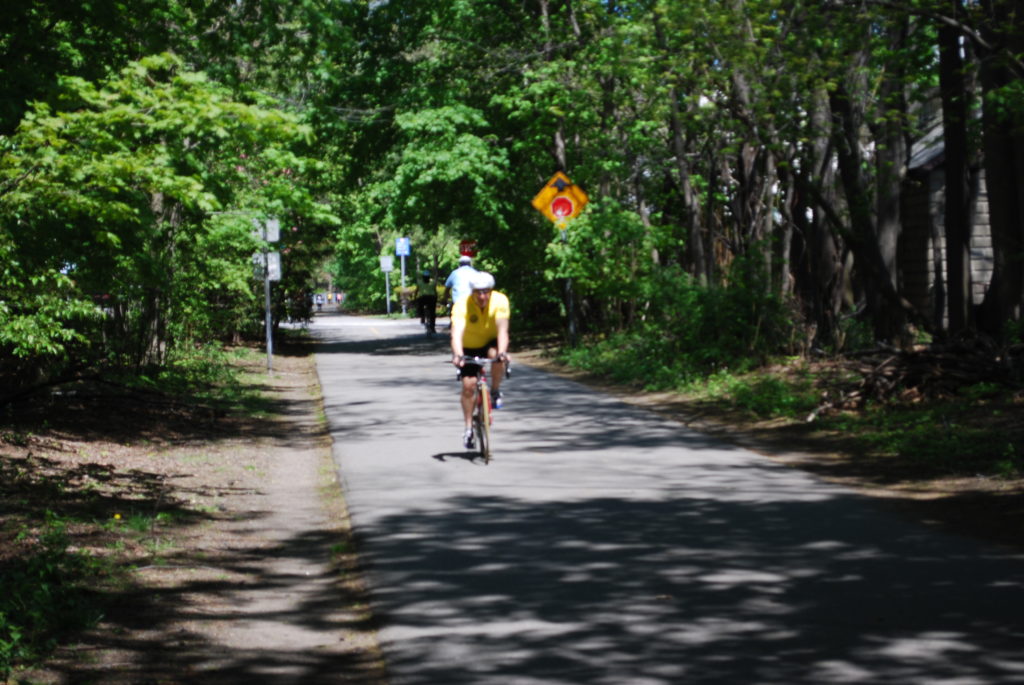 The Metropolitan Area Planning Council passed along this article to our office recently. It was written in 2014 by Taz Loomans, addressing congestion in her native Phoenix. Points of it apply to Belmont and our surrounding communities as well. We have edited it considerably; but you may read the full article at BloomingRock.com.
The Metropolitan Area Planning Council passed along this article to our office recently. It was written in 2014 by Taz Loomans, addressing congestion in her native Phoenix. Points of it apply to Belmont and our surrounding communities as well. We have edited it considerably; but you may read the full article at BloomingRock.com.
1. Bikeways make places more valuable. A 2006 study found that in Minneapolis, median home values rose $510 for every quarter-mile they were located closer to an off-street bikeway. In Washington DC,, 85% of nearby residents say the 15th Street bike lane is a valuable community asset. By mapping real estate transactions, researchers have been able to show that bike facilities can have positive, statistically significant impacts on home values. Given two identical houses in Indianapolis, with the same number of square feet, bathrooms, bedrooms, and comparable garages and porches—one within a half mile of the Monon Trail and another further away—the home closer to the trail would sell for an average of 11% more.
2. Bikeways help companies attract talent. Several recent studies have shown that younger people are increasingly disenchanted with driving. The percentage of people age 16 to 24 with drivers’ licenses is lower than at any point since 1963. And among the wider 16 to 34 cohort, bike trips have increased 24%.
3. Bike commuters are healthier and more productive. According to a 2003 study by the US Department of Health and Human Services, “workplace physical activity programs can reduce short-term sick leave by 6 to 32%, reduce health care costs by 20 to 55%, and increase productivity by 2 to 52%.” While we don’t know how much of those effects are due to biking, the benefits of integrating physical activity into daily routines are indisputable. A study of 30,604 people in Copenhagen showed that people who commuted to work by bike had 40% lower risk of dying over the course of the study period than those who didn’t.
4. Bike facilities increase retail stores’ visibility and sales. Among sveral studies, a San Francisco State University researcher found 66% of shops on San Francisco’s Valencia Street reported business improved after the city reduced the road width, widened sidewalks, and added cycling infrastructure.
5. Bicycling saves a city money. Researcher Todd Litman of the Victoria Transport Policy Institute looked at the benefits of congestion reduction, roadway cost savings, vehicle cost savings, parking cost savings, air pollution reduction, energy conservation, and traffic safety improvements. Litman estimated that replacing a car trip with a bike trip saves individuals and society $2.73 per mile. Bicycles also cause less wear on the pavement, reducing the need for repairs.
6. Bikes reduce congestion and therefore reduce the need for more freeways. According to the Texas Transportation Institute, “Gridlock costs the average peak-period traveler almost 40 hours a year in travel delay, and costs the United States more than $78 billion each year. . .[T]raffic jams are wasting 2.9 billion gallons of gas every year.” In urban areas, where cars and bicyclists travel at similar speeds, bike lanes can accommodate 7 to 12 times as many people per meter of lane per hour than car lanes.
7. Bicycling saves in health-related costs. There are many different ways to estimate the health cost savings of bicycling. The values vary depending on study design, medical conditions attributed to inactivity, cost data availability, and other variables, but all studies show positive outcomes. The health savings resulting from physical activity, measured in 10 different studies, range up to $1,175 per person, per year. Taz Loomans is an urbanist, writer, and licensed architect in the Phoenix area.


Sorry, the comment form is closed at this time.